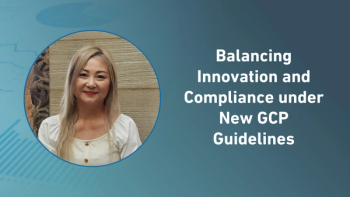
Better Patient Engagement Begins With Electronic Informed Consent
While eConsent has become more widely adopted since COVID-19, work still needs to be done in improving patients’ understanding.
The healthcare system is intimidating for most, and clinical trials, while often a source of hope for patients, can add an extra layer of stress. Even medically savvy patients can get confused when reviewing a typical informed consent form (ICF) filled with medical jargon, statements of risk, and lists of protocol-required activities—it’s not uncommon for people to walk away without fully retaining the details of the ICF, which down the line, can lead to poor engagement and protocol adherence, as well as study drop-out.
Enter electronic informed consent (eConsent). A multi-media eConsent platform can translate even the most complex protocol into patient-friendly language and transform the paper ICF into a dynamic digital experience that appeals to most learning styles. The result? Participants better understand the study and what it means for them, their health, and their daily lives—leading to stronger engagement and retention throughout the trial in addition to better regulatory compliance. The adoption of eConsent skyrocketed during the pandemic—and it’s critical that we don’t lose momentum amid its numerous benefits. Here are five proven steps to help sites across the globe seamlessly adopt eConsent solutions.
Step 1: Embrace different country strategies for eConsent
Global regulatory environments are complex, with nuanced differences among regions, countries and local communities. It’s important to note that while electronic signatures on an ICF are not accepted by all agencies regulating clinical trials, flexible, feature-rich eConsent products can be customized to meet each site’s local laws and guidelines. For example, a product offering eSignature, offline signature and print-to-sign options are all essential to ensuring trial participants, sites and sponsors gain the full benefits of eConsent.
Furthermore, to ensure long-term success of global eConsent adoption, sponsors must maintain a growing database of eConsent signature modality acceptance, highlighting appropriate practices country by country and region by region. Correspondingly, databases must be constantly updated with regulatory intelligence to prevent risk noncompliance, trial delays and a regression back to paper ICFs. In this step, having an eConsent partner that understands how to navigate regulatory agencies with a deep understanding of the types of questions and information required per country is a major plus.
Step 2: Integrate eConsent in trial planning
Commitment to eConsent success begins at trial planning. For this reason, the matter should be included in site-selection questionnaires, and checklists should be in place to help identify any challenges to eConsent adoption concerning experience, patient population, SOPs, technology, and connectivity. When dealing with potential sites, sponsors should clearly convey that eConsent is the established and expected method for consenting patients, honing into the information to demonstrate how it will benefit them and their patients.
Step 3: Optimize informed consent form digitization timelines
Traditionally, the creation of the electronic informed consent form (eICF) would not take place until approval of the paper ICF per country/site was received. However, in my team’s experience, we have been able to optimize the submission strategy in partnership with IRBs and ethics committees by approaching the ICF digitization in parallel with the paper ICF approval process. This approach enables organizers to be ready to start consenting patients by the site initiation visit (SIV), a critical rung in the ladder to higher eConsent site adoption. When sites are trained and confident to start consenting electronically from the first patient visit, we see them embrace the technology rapidly—bringing on multiple benefits.
Step 4: Train and communicate
Once site selection is complete and site initiation begins, eConsent should be included in all team communication and training. To ensure adequate apprenticeship, leaders should implement modules, guides and videos that prepare staff to oversee processes and best practices. In addition, organizers should be ready to discuss frequently asked questions, including a checklist of items to be covered during the site initiation visit. A robust site adoption escalation pathway will quickly reveal any unidentified challenges that arise throughout site selection and study conduct.
Step 5: Build a monitor advocacy program
Once a site has been successfully activated, it is important to continue to engage with staff regarding their use of eConsent so that the efficiencies of the system in consenting, reconsenting and remote monitoring are realized. One way to ensure success is by providing organizers with a comprehensive list of consent-related tasks to be included in the clinical operation strategy and site monitoring plans. CRAs are on the “front line” with sites and usually are the first to detect if a site requires extra support. I recommend that you identify and train a team of eConsent subject matter experts who can be advocates for CRAs and ensure that your monitoring teams are aware of all the materials, training and support available to them.
A giant leap forward for clinical trials
The evolution to digitally enabled clinical trials is well underway, but the status quo bias is strong. I know from experience that upfront planning and training go a long way to improving patient engagement, protocol adherence, and patient retention rates. The time is now for trial sponsors and research sites to fully embrace eConsent platforms as the standard for optimal patient experience. I hope these steps help more of my colleagues in the clinical research industry gain the greatest value of feature-rich eConsent platforms and deliver better care for the patients we all tirelessly work to support each day.
Kate Godwin-Smith, Director, Client Services, Patient Consent Solutions,
Newsletter
Stay current in clinical research with Applied Clinical Trials, providing expert insights, regulatory updates, and practical strategies for successful clinical trial design and execution.






.png)



.png)



.png)
.png)
